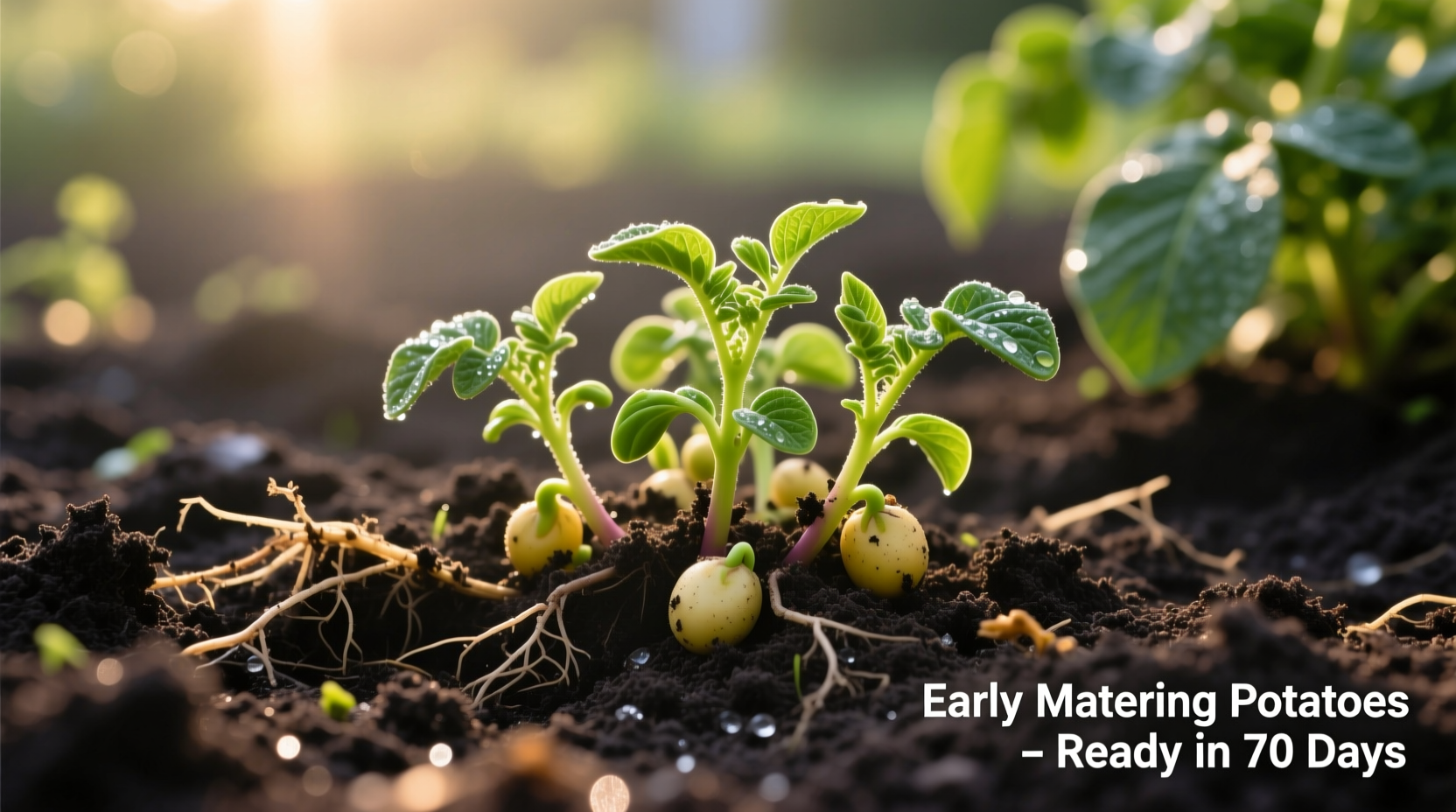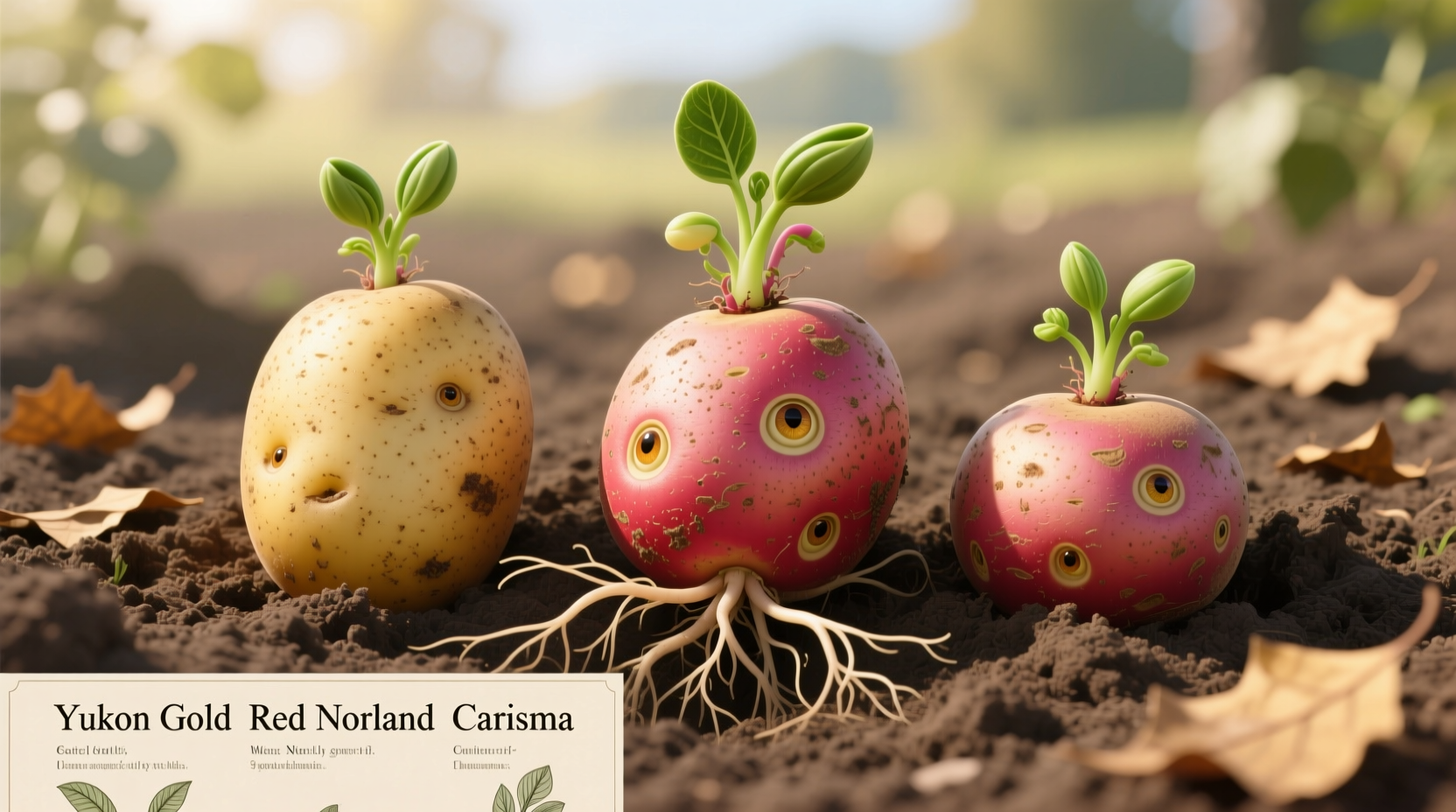Discover which early maturing potato varieties will give you the fastest harvest without compromising flavor or yield. Whether you're gardening in a northern climate with a short season or simply want to enjoy fresh potatoes earlier, understanding these quick-growing options transforms your gardening strategy.
What Makes a Potato Variety "Early Maturing"?
Early maturing potatoes reach harvestable size in 70-90 days from planting, compared to 100-130 days for maincrop varieties. The USDA Agricultural Research Service defines early varieties as those producing marketable tubers before summer solstice in most temperate zones. These potatoes develop smaller tubers initially but provide that first taste of homegrown potatoes while maincrop varieties are still developing.
Top 7 Early Maturing Potato Varieties Compared
| Variety | Days to Maturity | Best Growing Zones | Key Characteristics | Disease Resistance |
|---|---|---|---|---|
| Yukon Gold | 70-80 | 3-9 | Creamy texture, buttery flavor, versatile for cooking | Resistant to PVY, susceptible to late blight |
| Red Norland | 70-85 | 2-10 | Skin stays smooth, excellent for boiling and salads | Moderate resistance to scab, susceptible to blight |
| Irish Cobbler | 75-85 | 3-8 | Russet-type with early maturity, good for baking | Moderate resistance to PVX, susceptible to common scab |
| All Blue | 80-90 | 3-9 | Unique purple flesh, nutty flavor, retains color when cooked | Moderate resistance to PVY, susceptible to blight |
| Caribe | 70-75 | 4-9 | Smooth white skin, excellent for boiling and mashing | Resistant to PVY and golden nematode |
| Warba | 75-85 | 3-8 | Yellow flesh, high yield potential, good storage | Resistant to PVY and common scab |
| Red Pontiac | 80-90 | 3-10 | Deep red skin, excellent for boiling and salads | Moderate resistance to scab, susceptible to blight |
Why Early Maturing Varieties Matter for Your Garden
Early maturing potatoes offer strategic advantages that extend beyond just getting potatoes to your table faster. According to Cornell University's College of Agriculture and Life Sciences, these varieties provide critical flexibility in crop rotation planning, allowing gardeners to follow early potatoes with second plantings of beans, lettuce, or other quick crops. The historical development of early varieties dates back to the 19th century when European farmers selectively bred potatoes to mature before late blight typically struck in August.
Early varieties perform best in regions with short growing seasons (zones 3-5) or where gardeners want to avoid peak pest pressure. The University of Maine Cooperative Extension notes that early potatoes often escape Colorado potato beetle infestations since the beetles typically emerge after early varieties have been harvested. However, these varieties generally don't store as well as late-season types, with most keeping for 2-3 months under ideal conditions compared to 6+ months for storage varieties.

Planting Calendar for Early Maturing Potatoes
Timing is critical for maximizing your early potato harvest. Plant seed potatoes 2-4 weeks before your last expected frost date when soil temperature reaches at least 45°F (7°C). The USDA Plant Hardiness Zone Map provides specific timing guidance based on your location:
- Zones 3-4: Plant late April to early May
- Zones 5-6: Plant mid to late April
- Zones 7-8: Plant early to mid-March
- Zones 9-10: Plant late January to February
For best results with early maturing potato varieties for home gardens, use certified seed potatoes rather than grocery store potatoes, which may carry diseases. Plant in loose, well-drained soil with pH between 5.0-6.5. Hill soil around plants when they reach 6-8 inches tall to protect developing tubers from sun exposure.
Maximizing Your Early Potato Harvest
Early season potatoes require slightly different care than maincrop varieties. Water consistently during tuber formation (when plants flower), providing 1-2 inches per week. Stop watering 2 weeks before harvest to allow skins to harden. The most reliable indicator for harvesting early potatoes is when plants begin flowering - this signals that "new potatoes" are ready for immediate eating.
For storage potatoes from early varieties, wait until foliage yellows and dies back. Cure harvested potatoes in a dark, humid location (50-60°F) for 10-14 days before moving to long-term storage at 38-40°F. Remember that early varieties like Yukon Gold and Red Norland won't store as long as Russets, so plan to use them within 2-3 months.
Common Challenges and Solutions
Early maturing potatoes face specific challenges that differ from maincrop varieties. The most common issue is greening from sun exposure - since these varieties produce tubers closer to the surface. Regular hilling solves this problem. Another challenge is lower yields per plant compared to late varieties, but this is offset by the ability to plant a second crop in the same space.
According to the American Phytopathological Society, early varieties are generally less susceptible to late blight because they mature before the disease typically becomes problematic in most regions. However, they may be more vulnerable to early blight and common scab. Rotate planting locations annually and avoid overhead watering to minimize disease pressure.











 浙公网安备
33010002000092号
浙公网安备
33010002000092号 浙B2-20120091-4
浙B2-20120091-4